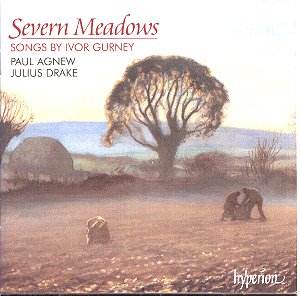 Edward MacDowell: Piano Concertos Nos. 1 & 2, Second Modern Suite
Edward MacDowell: Piano Concertos Nos. 1 & 2, Second Modern Suite
Seta Tanyel (piano), BBC Scottish Symphony Orchestra/Martyn Brabbins
Recorded: 14-15 September 2000, Caird Hall, Dundee (Concerti); 17 December 2000, Henry Wood Hall, London (Solo)
Label: Hyperion CDA67165
Duration: 77:10
Edward MacDowell (1860-1908) occupies a unique niche in the pantheon of American composers, with a European-trained sensibility that informs much of his oeuvre. His two piano concertos, along with the Second Modern Suite for solo piano, are arguably his most significant contributions to the concert repertoire, and this recent Hyperion release featuring Seta Tanyel and the BBC Scottish Symphony Orchestra under Martyn Brabbins presents an opportunity to reevaluate these works in light of their historical and musical contexts.
The Piano Concerto No. 1 in A Minor, Op. 15 (1885) is a work steeped in the Romantic tradition yet imbued with a distinctly American aspiration towards lyrical expressiveness. Tanyel’s interpretation of this concerto is marked by a clear forthrightness, allowing the music’s sweeping melodies to resonate without excessive sentimentality. In the opening movement, Allegro non troppo, the piano’s entrance is assertive, with Tanyel establishing a strong thematic presence that is both commanding and lyrical. The orchestration, particularly the woodwinds, complements the piano’s voice, creating a rich tapestry that is skillfully navigated by Brabbins, whose conducting demonstrates a keen sensitivity to the balance between soloist and ensemble.
Contrastingly, the slow movement, Andante con moto, reveals Tanyel’s ability to cultivate a more introspective atmosphere. Here, she employs a delicate touch, particularly in the piano’s cascading arpeggios, which evoke a sense of longing and nostalgia. The interplay between the soloist and the orchestra during this movement is particularly noteworthy, as the strings weave a lush harmonic backdrop that allows Tanyel’s nuanced phrasing to shine through. This movement, with its poignant thematic material, serves as a testament to MacDowell’s ability to evoke deep emotional responses, a hallmark of Romantic music.
The final movement, Allegro, brings the work to a vigorous conclusion, where Tanyel’s technical prowess is on full display. Her articulation of the rapid passages is crisp, and she deftly navigates the interplay of rhythmic complexity and melodic clarity. Brabbins’s orchestra supports her with a buoyant energy, particularly in the energetic brass and percussive elements that punctuate the movement’s climaxes.
Turning to the Piano Concerto No. 2 in D Minor, Op. 23 (1890), we encounter a slightly more mature voice in MacDowell’s writing. Tanyel’s interpretation here is equally compelling, though it diverges in its structural complexity. The first movement, Maestoso, exhibits a more pronounced dramatic arc, with Tanyel emphasizing the contrasts between the tempestuous orchestral passages and the lyrical piano entries. The depth of expression in the slow movement, Allegro moderato, is particularly striking. Tanyel’s performance here is marked by an exquisite use of rubato, lending an improvisational quality that enhances the emotional weight of the music.
The Second Modern Suite, Op. 14 (1883), included as a solo piano work, is a delightful addition that showcases MacDowell’s lyrical gifts and his flair for color in the piano’s sonority. Tanyel’s performance is characterized by a fluidity that captures the essence of the suite’s various moods, from the buoyant opening to the more introspective sections. The engineering quality of this recording is exemplary, allowing the subtleties of Tanyel’s touch and the nuances of the piano’s dynamic range to be fully appreciated—a testament to Hyperion’s commitment to high production standards.
Comparatively, this recording stands out in a competitive field, particularly against the Naxos and Olympia versions currently available. While the Naxos performances may present a more vivacious energy, Tanyel’s interpretations offer a sense of poise and control that is undeniably compelling. Moreover, the Hyperion recording benefits from a slightly superior engineering quality, enhancing the overall listening experience.
In conclusion, this release of MacDowell’s Piano Concertos, coupled with the Second Modern Suite, reaffirms the composer’s status as a significant figure in the transition between the Romantic and early 20th-century musical landscapes. Tanyel’s thoughtful interpretations, combined with Brabbins’s adept direction and Hyperion’s high-caliber recording, create a compelling argument for MacDowell’s music, inviting both seasoned enthusiasts and newcomers to explore this rich repertoire. The disc serves as a valuable addition to the Hyperion catalog and an essential recording for those interested in the evolution of American classical music.



